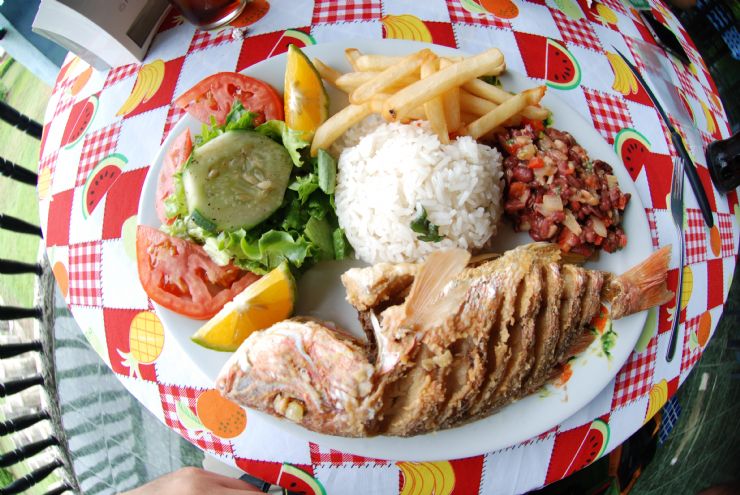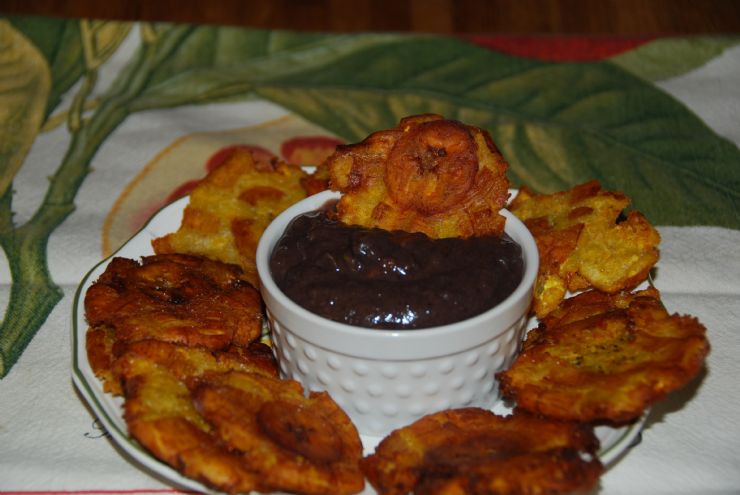Costa Rican fare is nutritionally well rounded, and nearly always cooked from scratch from fresh ingredients. Traditional meals have a home-cooked, comforting feel to them. Due to the tropical location of the country, there are many exotic fruits and vegetables readily available and included in the local cuisine.
Due to the contrast of Costa Rica’s large tourist economy with the many rural communities throughout the country, the foods available, especially in the more urban areas, have come to include nearly every type of cuisine in addition to traditional Costa Rican dishes. Cities such as San José, Costa Rica, the capital, and beach destinations frequented by tourists offer a range of ethnic foods, from Peruvian to Japanese. Chinese and Italian food is especially popular with Ticos (the local name for anything Costa Rican), and can be found around the country, though with varying levels of quality. Food is an important aspect of Costa Rican culture, and family gatherings and celebrations are often centered around meals.
The indigenous people of Costa Rica, including the Chorotega, consumed corn as a large part of their diet during the pre-Columbian era. Although modern Costa Rican cuisine is very much influenced by the Spanish conquest of the country, corn still maintains a role in many dishes. Tamales, originally introduced to all of Central America by the Aztecs, are served at nearly all celebratory events in Costa Rica and especially at Christmas. They are made out of dough of cornmeal, lard, and spices, stuffed with various mixtures of meat, rice, and vegetables and wrapped and steamed in a plantain or banana leaf. The Chorotega native people prefer to stuff their tamales with deer or turkey meat, pumpkin seeds, tomatoes, and sweet peppers.
The Caribbean coast of Costa Rica comes with its own host of Afro-Caribbean influenced traditions. During the holidays, it is common to find pork cracklings and a tripe soup called mondongo. Rice and beans is a common dish on the Caribbean side, not to be confused with gallo pinto and other dishes containing rice and beans; this dish consists of rice and beans cooked in coconut milk and typically served with fish and some type of fried plantain, and are included in nearly every Costa Rican meal, even breakfast. Potatoes are another Costa Rican staple, part of the starch-rich Tico diet. Pork and beef are the most commonly eaten meats, but chicken and fish dishes are also widely available, especially on the Caribbean coast.
Salsa Lizano was created in 1920 by a Costa Rican company called the Lizano company. During the past century, it has become a common condiment and element of Tico cooking in both households and restaurants all around the country. It has a tangy flavor and combines the following ingredients: water, sugar, salt, onions, carrots, cauliflower, cucumber, pepper, mustard, turmeric, and monosodium glutamate. Salsa Lizano is used in many Costa Rican dishes, including gallo pinto and tamales. It is compared to Worcestershire sauce.
Gallo Pinto
Gallo Pinto is a breakfast dish made of rice and beans. The cuisine itself has roots in both Costa Rican and Nicaraguan culture, and is typically referred to as just “pinto” by the locals. The rice and beans are mixed together and sometimes paired with other ingredients to give it some flavor and texture, like peppers, cilantro, and onions. When the beans and rice are mixed together, they create some coloring variations that make it look like the rice is speckled. This is how the dish got its name, because gallo pinto means “spotted rooster.”
Olla de Carne
The hearty olla de carne is a favorite dish that you’ll find being prepared in many homes across the country on any given month of the year. While the stew can be compared to some stew from other cultures, there is usually a set of ingredients that help make it unique in look and taste. Costa Rica is a mecca for fresh ingredients, and these are included for the olla de carne recipe. These ingredients include cassava, carrots, corn, plantains, and taro root. Combined with other vegetables, this stew is full of rich flavors. You aren’t likely to have room for side dishes, but olla de carne (shown as our featured photo, above) is often served with rice and beans.
Sopa Negra
This traditional black bean soup is filling. Some of the main ingredients include black beans, onion, peppers, cilantro, tomatoes, and spices, along with Tabasco sauce for just a little heat, but more often than not, for more flavor.
Casado
For lunch, the traditional meal is called a Casado. Casado literally means “married man” in Spanish, acquiring the name from when wives would pack their husbands a lunch in a banana leaf when they left to go work in the fields. This is a dish that ‘marries’ many foods on the same plate. If you order a casado at a Costa Rican restaurant, you can expect to be served a large plate of food that contains fresh fruit juice, rice, beans, salad, tortillas, fried plantain, and meat (beef, chicken or fish). The location within the country will determine which meat you can choose from. It is typical to include a whole cooked fish in many areas!
Patacones
The plantain, a larger member of the banana family, is another commonly used fruit and can be served in a variety of ways. Ripe plantains (maduro) have a sweet flavor and can be fried in oil, baked in a honey or a sugar-based sauce, or put in soups. Green (unripe) plantains can be boiled in soups or can be sliced, fried, smashed and then deep fried to make patacones. These are often served with a bean dip or guacamole. Served with some pico de gallo. Patacones make a great appetizer!
Arroz con Leche
Although flan – a caramelized egg custard pudding, served cold – is often a standard dessert, the Arroz con Leche dessert is also typical. A simple dessert made with rice and milk, the taste is much more complex and delicious. Other ingredients include sugar, salt, lemon zest, and cinnamon sticks!



